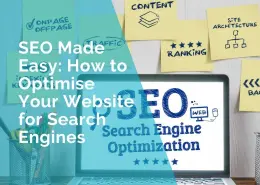Link Building Outreach: What To Do If You’re Not Getting Replies
Link building can be discouraging at times. Every link builder has been in a situation where they spent a ton of time preparing a new campaign, only to look at a measly 2% reply rate.
Personally, I know this pain all too well. But, even if it feels like you’re wasting your time, you should take a look at your strategy, change it a little bit and keep going.
On my own, I’m able to generate 10-20 DR 50+ backlinks every single week, and today I will be sharing some of my advice on how to get more out of your campaigns as well.
Experiment With Your Subject Line
The subject line is often your first and last chance to catch the attention of your prospect. When you’re reaching out to bloggers, you have to keep in mind the fact that you’re far from the only person pitching them links.
So, you should do your best to avoid overused subject lines like:
- “Question about {organization}’s blog”
- “Quick note about your {topic} post”
And similar variations. Everyone has seen them at least a hundred times at this point. They CAN work, but you will get considerably worse results if you keep using these.
Your subject line needs two things to grab attention: a bit of personalization (like the prospect’s website or name mentioned), and clarity (avoid using hype and power words within email subject lines). The prospect needs to instantly understand why you’re reaching out to them, but in a good way.
A couple of better subject lines examples would be:
“Some love for {organization}’s blog post”
“{your company} + {their company} = Collaboration?”
I personally use these in my own campaigns.
Try A New Strategy
There are many ways to build backlinks. One of the most popular ones is guest posting, and a lot of beginner link builders strive towards it, because it is quite efficient.
Link building works better when you utilize multiple strategies at the same time. What I personally do is a mix of three:
- Anchor text strategy
- Reverse skyscraper technique
- Guest posting
Whenever we publish a new blog post, I create two campaigns (anchor text and reverse skyscraper).
The first one is essentially finding articles that have mentioned your article’s target keyword briefly, and pitching them your link. The second one is straight up stealing links from your competitors: first you look up the best-performing articles for your target keyword, then you reach out to the people linking to those articles telling them how your own content is better.
After every successful link exchange, I also ask the person a couple of questions.
Do you have any other domains that you’re building links to?
Do you accept guest posts?
This way, I’m trying to squeeze out every potential collaboration opportunity and maximize the value I can get out of every prospect that replies.
A lot of the time people manage multiple resources, so you’re able to get a number of links from one prospect, and even land a guest post on one of them (or more).
Warm Up Your Email Account
One of the biggest factors that determine the efficiency of your link building outreach campaigns is the rate at which your pitches end up in peoples’ spam folders.
One of the ways you can avoid it is by warming up your email account first. Warming up simply means that you start with a very low number of daily emails sent, and gradually increase that number every week.
Every once in a while you will see your deliverability and engagement rates drop, so you will most likely find yourself warming up your address and scaling outreach way back down to 10-15 daily emails.
If you’re struggling with deliverability and spam filters right now, there is one helpful tool that can help you remedy this.
It’s called Lemwarm. It works by sending emails from your account to other lemwarm users. The tool automatically responds to such emails on their account, and also marks them as not spam, improving your overall deliverability rates with time.
It sounds a little weird if you don’t know about it, but we use it, and so far it’s helped us out a ton.
Recently I had a massive drop in open rates (down to 10-20%), and after signing up to lemwarm it has helped get back to the average 50-60% (sometimes up to 80%) open rate.
Make Sure You’re Reaching Out To The Right People
A lot of the time link building pitches go unanswered because they ended up in the wrong inbox. If, say, a recently hired college student assisting in sales gets one, it’s more than likely that they will simply ignore it.
Sometimes, they will forward it to the person responsible for link building, but most of the time, they will not bother spending their time to do so.
So, when you’re preparing your link outreach campaign, it is imperative that you find the appropriate people to reach out to.
If the team has a dedicated link builder, they would be your best bet. Some other positions you should be targeting are: any SEO-related people, digital marketers, editors, content managers, and webmasters.
The smaller the team, the higher the likelihood that a member has to manage multiple types of responsibilities, including maintaining the blog, but it’s always a good idea to look for employees specializing in it.
In addition to sending an email pitch, it is also a good idea to connect with your prospect on LinkedIn and drop them a line.
Verify Email Addresses Before Pitching
As much as it is important to find the right person to mess with, it won’t matter until you find an email address that is actually verified.
There are tons of different tools available that can verify an email address. None of them are 100% accurate, but in general, they give you one of three outcomes when scanning an address:
- Green (verified and is actively being used)
- Yellow (unverified but there is a chance that it’s a real address that’s being used)
- Red (very unlikely to be in use)
There is another reason why you want to verify emails besides the obvious fact that you want your pitches to be read.
When you send an email to an account that does not exist, a bounce occurs. These bounces serve as an indicator to email service providers that you’re trying to guess email addresses.
And guessing is viewed as spammy, which will result in your overall deliverability suffering an impact.
So, using any unverified emails in your current campaigns will have an impact on your future campaigns as well.
Have A Solid Value Proposition
The goal of a link building email is not to just get read, but to kick off a mutually beneficial collaboration.
And if you make your pitch all about you, and what you want from them, you’re unlikely to get replies.
So, having a strong value proposition in your email is essential in order to get the prospect interested.
Some common value propositions used by link builders are:
- A link back (either from your site, a different site, or from one of your upcoming guest posts);
- A free trial of your tool;
- A social share;
- Money.
Google is actually against any kind of exchanges for backlinks. John Mueller himself recently stated that:
“From our point of view it’s fine to contact people and tell them it’s like, by the way, I have this great content and… maybe it’s something that you would appreciate for your website.
That’s generally fine.
“But anything beyond that where you’re saying like, well… you must link to me like this or you must pay me money or I will pay you money for this link or I will exchange something for this link…
That’s all something that from our point of view would make this an unnatural link.
So providing it to people and promoting it and saying like here’s great content and they link to you that’s perfectly fine.
Um… providing it and saying like I will do an exchange if you give me a link, that’s something we would consider unnatural.”
In reality, however, very few people will actually give you a link simply because your content is good. And this has done very little to stop link builders from doing link exchanges.
Don’t Forget To Send A Follow-Up (But Not Too Soon)
Bloggers’ inboxes get flooded with pitches all of the time. Besides, even if they wanted to reply to you, they could have gotten distracted by a more important task, or simply forgot.
So, it is an essential practice to include a follow-up in your email sequence. But it’s also important to respect people’s time and not overdo it.
Your follow-up should be scheduled to be sent 3-5 business days after your initial pitch. Any sooner and you will be risking to come across as pushy and impatient.
You also shouldn’t send any more than a single follow-up. Two emails is usually enough to get yourself noticed, and if you still didn’t get a reply, it is likely that the person simply isn’t interested.
And in that case, sending another follow-up would only increase your chances of getting flagged as “spam” rather than receiving a response.
Most Importantly, Don’t Get Discouraged!
Link building is very much a game of numbers. And, on average, you will be receiving 1 response per 10 emails sent.
So, if you’re struggling to get results, the best advice I could give you is to play around with your strategies a bit, and keep going!
Author’s Bio:
Managing brand partnerships at Respona, Vlad Orlov is a passionate writer and link builder. Having started writing articles at the age of 13, their once past-time hobby developed into a central piece of their professional life.















